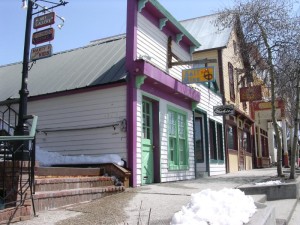
Breckenridge has one of the largest Historic Districts in Colorado. Many buildings are ripe for green renovation.
The greenest building is the one that is already built.

Breckenridge has one of the largest Historic Districts in Colorado. Many buildings are ripe for green renovation.
That’s the message being spread by some historic preservationists as recent studies lend further support to adaptive reuse and recycling of existing building stock, versus construction of new buildings.
Studies have shown the merits of “green building,” which includes advanced energy efficiency technology, use of sustainable methods and materials, and the Leadership in Energy and Environmental Design rating system; but until recently, there’s been relatively little data available highlighting the benefits of building reuse. Now, more are beginning to see how adaptive preservation of older buildings combines ideas that are forward-thinking, sustainable and community-friendly.
“Preservation saves energy by taking advantage of the nonrecoverable energy embodied in an existing building and extending the use of it,” according to the Advisory Council on Historic Preservation.
Surprisingly, older buildings, especially commercial structures built before 1920, have been shown to be extremely energy efficient. New construction, on the other hand, requires enormous expenditures of energy and materials.
A recent study by the Environmental Protection Agency estimated that 30 to 40 percent of our natural-resource extraction comes from the building industry. What’s more, if new construction involves tearing down an existing structure, add to that the energy expended in demolition and the waste that ends up in our landfills.
Think of the slogan: reduce, reuse, recycle – why shouldn’t it apply to our built environment? Yet there is still a strong aversion to recycling existing buildings through retrofitting and reuse. There are the architects and developers involved who find it much simpler to start from scratch, and the fact that new construction is a pillar of the U.S. economy.
A local case in point is the Aboff building (formerly Hotel Huntington) at 410 New York Avenue, which, sadly, failed to obtain historical landmark status from Town and State officials in March and is currently slated for demolition and replacement by a drive-through bank, despite efforts from local preservationists and community members.
For more information on historic preservation issues:
http://www.preservationnation.org/issues/sustainability/green-lab/
http://www.splia.org/index.php
To calculate “embodied energy” on any building: http://www.thegreenestbuilding.org/









